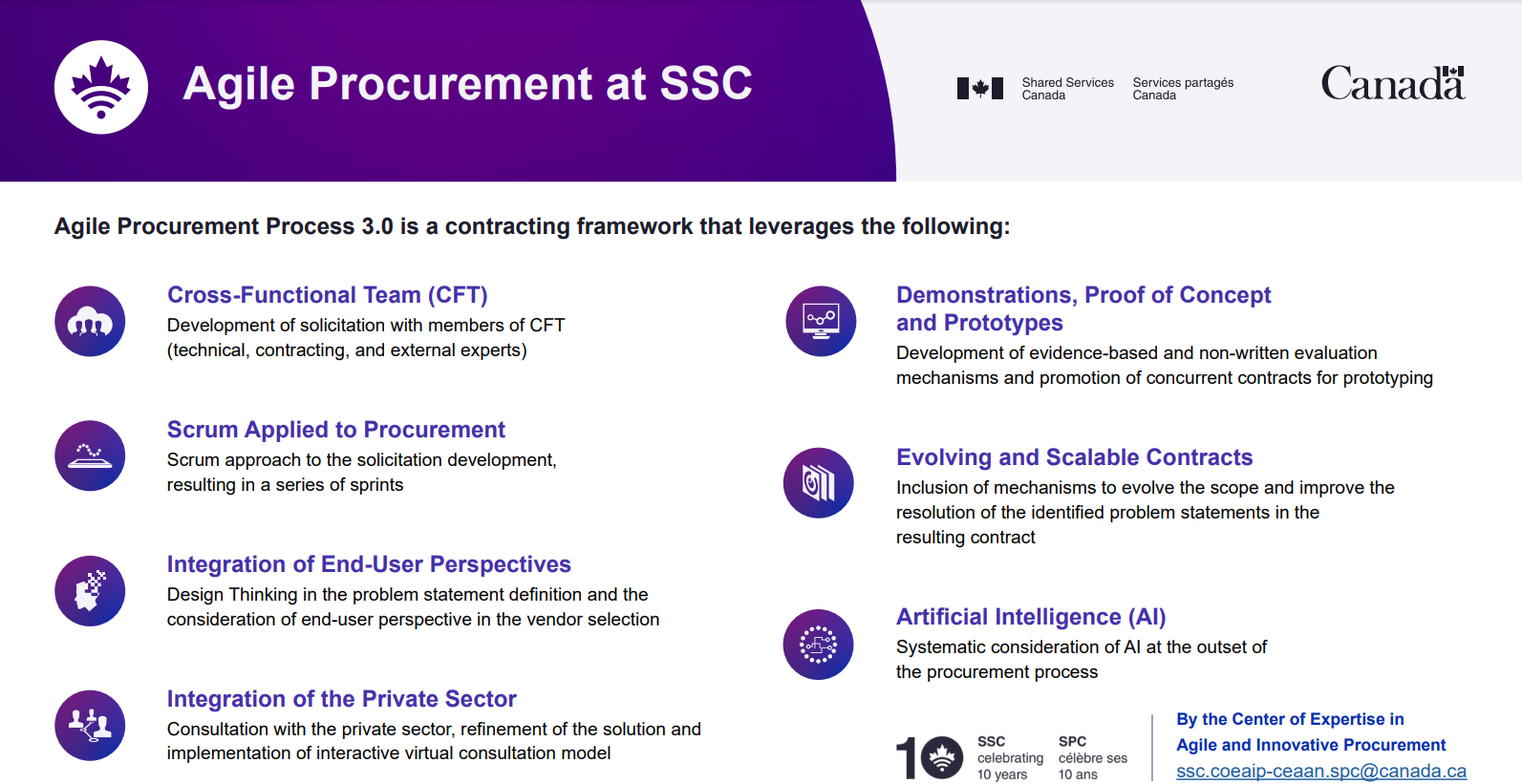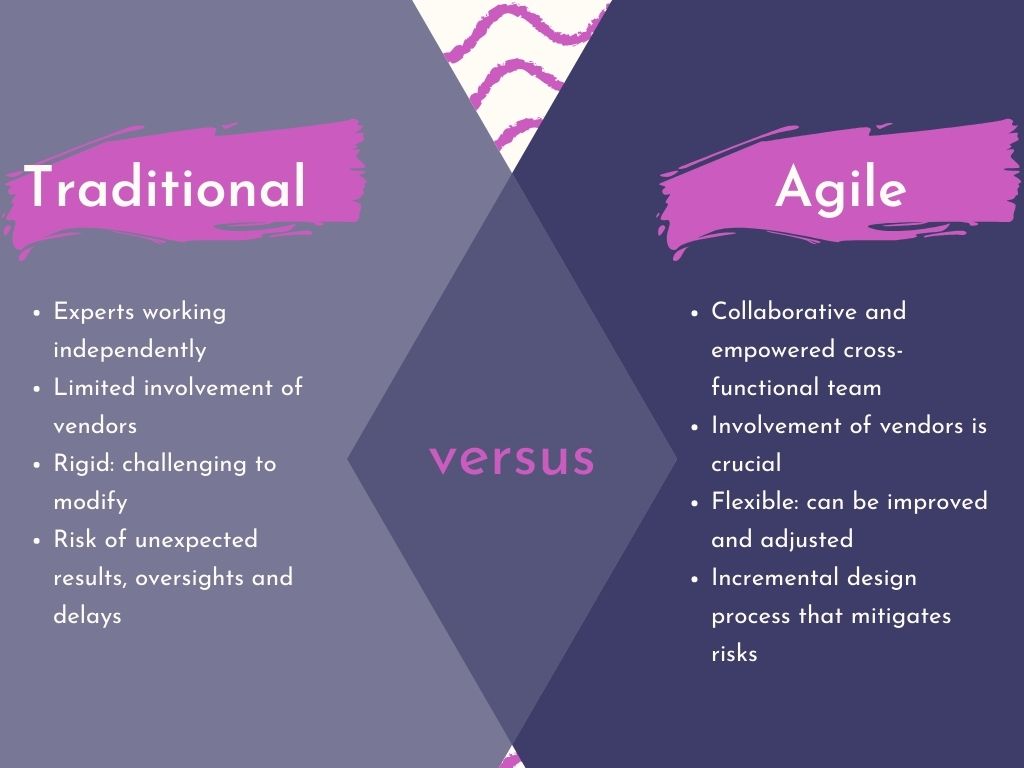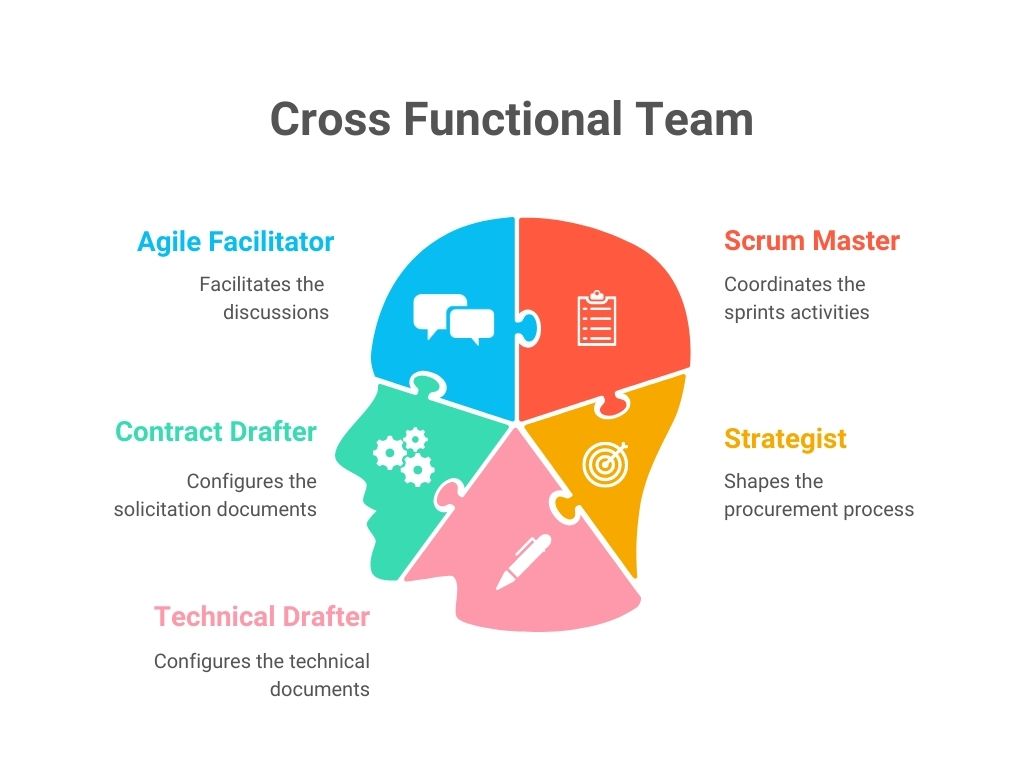Important: The GCConnex decommission will not affect GCCollab or GCWiki. Thank you and happy collaborating!
COEAIPAPP30
Jump to navigation
Jump to search
| Home | APP3.0 | Pilots | ScaleUp |
What is APP 3.0?
Agile Procurement Process (APP3.0) is a procurement framework that
- focuses on resolving a problem
- leverages a flexible process adaptable to change
- allows for technical and contracting experts to work together in the development of a solicitation under the coaching of the agile procurement facilitator
- relies on digitally-enabled collaborative processes to integrate private sector in the design of the procured technology
- encompasses evolving and scalable contracts
- favors demonstrations, proof of concept and prototype
- integrates the end-user’s perspective in the selection process and resulting contract
12 Principles
There are 12 agile procurement principles:
- Satisfy the clients through contracts that delivers the expected outcomes.
- Welcome changing requirements, even late in development. Agile processes harness change for the client’s needs satisfaction.
- Deliver working solicitation components frequently, from a couple of weeks to a couple of months, with a preference to the shorter timescale.
- Work together with business people, IT technical and contracting experts daily throughout the solicitation development.
- Build solicitations around motivated individuals and give them the environment and support they need, and trust them to get the job done.
- The most efficient and effective method of conveying information to and within a development team is face-to-face conversation.
- Working solicitation components is the primary measure of progress.
- Agile processes promote sustainable development. The expert team members should be able to maintain a constant pace indefinitely.
- Continuous attention to technical excellence and good design enhances agility
- Simplicity–the art of maximizing the amount of work not done–is essential.
- The best architectures, requirements, and designs emerge from self-organizing teams.
- At regular intervals, the team reflects on how to become more effective, then tunes and adjusts its behavior accordingly.
Agile vs Traditionnal
Cross Functional Team
Collaborative Design
True Collaboration Approach
- Ask for individual feedback on specific elements by leveraging virtual surveys.
- In plenary, discuss elements that are potentially problematic.
- Let vendors make presentations and be curious about their reality.
- Be authentic, when it is possible to change, say so, when it is not, say why.
- Be transparent, promptly tell vendors what you have done with their feedback.
- Explain the agile process as often as it takes and using as many ways as needed to be understood.
- Find the flexibility within the rules to make vendors’ lives easier.
Training
COMING SOON
SSC and the CoEAIP are committed to equipping SSC employees with the knowledge needed to execute better buying approaches. As part of the deployment of APP3.0, the Enablers training curriculum within the Agile Procurement Learning Initiative (APLI) includes modules specifically designed to assist procurement officers with inclusion of multiple agile principles into their day-to-day procurement processes.




